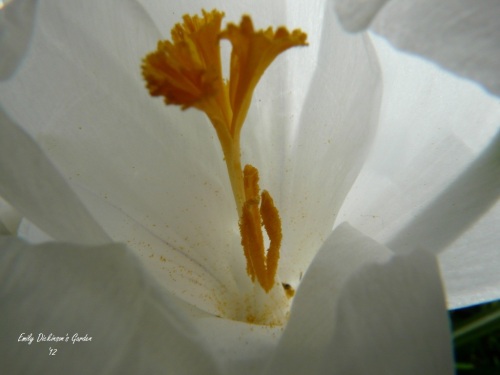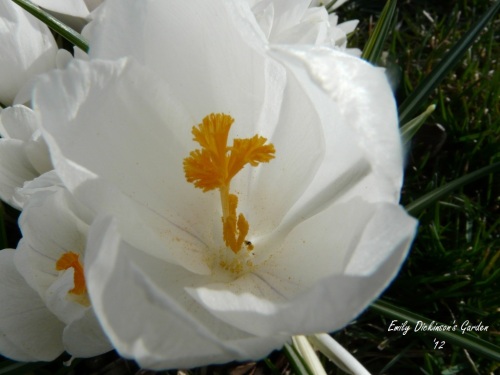After following the commandment yesterday to, “Consider the Lilies”, I became more interested in considering the crocus, too. Emily called them the “vassal of the snow,” but today they’ll be free to worship the sun.
This morning I went out to observe the tenderest portion of the crocus, its reproductive element, the flower. While snooping inside this tender spot–early spring homes for gnats and bees–I did spy a few of these little creatures at work and rest.
The crocus is different from the lily in that its stigma is divided into three at the tip of the style. The lily’s stigma is a tri-bulbous unit; the crocus’ stigma is a separated threesome we refer to in its plural form–stigmata (Stig-Muh-Tuh). The stamen (male portion of the flower) is also different. The lily has 6 stamen, while the crocus has but 3.
There is a fall flower that looks very much like the crocus and is mistaken for crocus called colchicum (Kohl-Chick-Um). It is actually part of the Lily family (Liliaceae) and has 6 stamen as well. If you ever wonder–crocus or colchicum–just count the stamen–three equals crocus, six equals colchicum.
Here are my pictures from the garden from this morning, a beautiful early spring day–temps climbing to 65. The focus is on the pistil (stigma, style and ovary–female parts) and the stamen (filament and anther–male parts).
Enjoy a walk through my garden’s tenderest and most private early April places as the crocus slowly open themselves up to the day’s sun.
“Crocuses come up, in the garden off the dining room.” Emily Dickinson quote from a letter.















